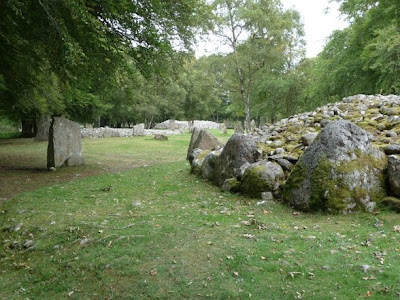 |
That's how they say it |
 |
One perspective |
 |
Another |
 |
By daylight |
...recounts the retirement travels of Mark and Vicki Sherouse since 2008...in Asia and the Pacific, New Zealand, Europe, South America, and Africa, as well as the US and Canada. Our website, with much practical information, is: https://sites.google.com/site/theroadgoeseveron/.Contact us at mark.sherouse@gmail.com or vsherouse@gmail.com.
 |
That's how they say it |
 |
One perspective |
 |
Another |
 |
By daylight |
 |
Cawdor Castle
|
 |
Cawdor crest, "Be Mindful"
|
 |
"Double bubble, toil and trouble, cauldron
burn and fire bubble," I always say, watching
the microwave; this is the only reference in
the house to that Macbeth
|
 |
In the maze garden
|
 |
In the flower garden
|
 |
I think I remember this sequoia from '89
|
 |
Oil rigs in the firth
|
 |
Castle Dunrobin
|
 |
| All three of the Clava Cairns |
 |
| The northeastern-most cairn, used to have a corballed roof, like in Ireland |
 |
| Middle cairn, the ring cairn |
 |
| No exit; no entrance |
 |
| Double-stones on the outer circle of the southwestern-most cairn |
 |
| Color-coded stones |
 |
| Cup-mark city |
 |
| Dinner |
 |
Entrance to Culloden; on the field, the placement of the regiments is denoted by
red and blue flags |
 |
Culloden has a superb visitor center that makes sense of these highly complicated
times and issues, using all kinds of hands-on as well as high-tech means; we also went on the battlefied tour |
 |
One of many Highlander memorials
|
 |
Prince Charles Edward's Liqueur, the "Spirit of '45" the labels used to say...
|
 |
Birnam Wood
|
 |
Asda (Walmart) in Perth
|
 |
Coolest Mini T-shirt of All Time, found at
the Asda
|
 |
Killiecrankie, a narrow defile of the River Garry
|
 |
General Hugh Mackay, leader of the Government forces
|
 |
Soldier's Leap (to escape the bloodthirsty Highlanders)
|
 |
Vicki on the (replica) Stone of Destiny, aka Stone of Scone |
 |
A scone, destined to be devoured by me |
 |
Weird Pictish animal depiction |
 |
This is a Class 2 stone, that is, mixed Christian and Pictish--this is the Christian side, with a Greek-style cross |
 |
Very large Monkey Puzzle tree on the Craigievar grounds;
and behind it, a 160 year- old Sequoia; the Victorians were really into exotic tree specimens for their estates' grounds |
 |
Craithes is noted for its original furnishingsdating to the 1590s
(beautiful carved stuff), painted ceilings, and its gardens; great tour, too |
 |
Craithes' gardens--a view from the castle
|
 |
Vicki in Craithes garden
|
 |
Mar Lodge, a beautiful hunting lodge once part of the Invercauld estate, now in the National Trust; it is decorated with, among other things, and ISIANMTU, 2,500 stag head mounts |
 |
At the Linn of Dee, we thought we'd be seeing a great gorge |
 |
Linn of Dee; well, it is nice |
 |
The Robert Louis Stevenson cottage in Braemar, where he wrote Treasure Island in the summer of 1881 |